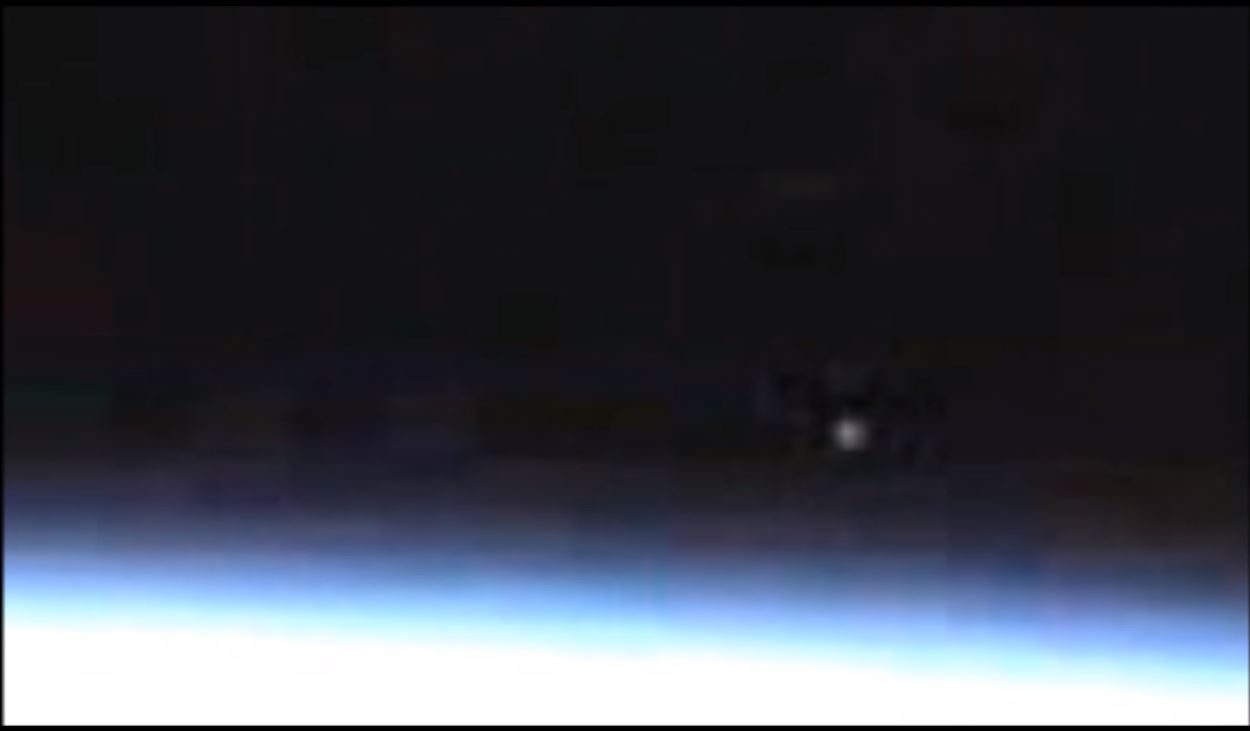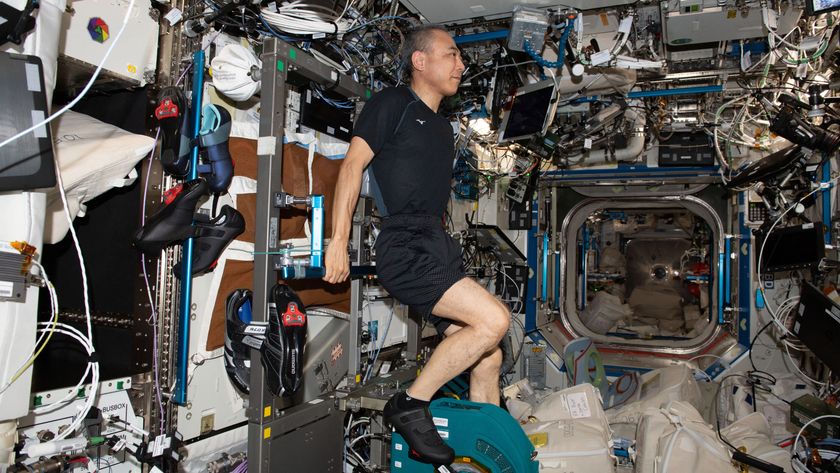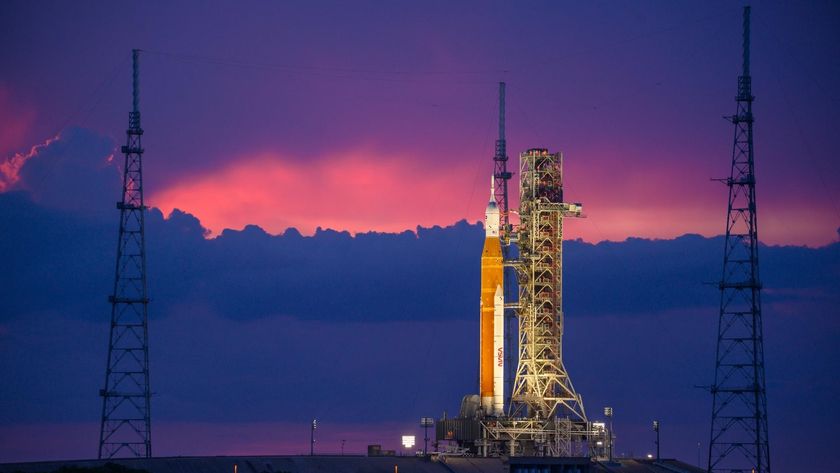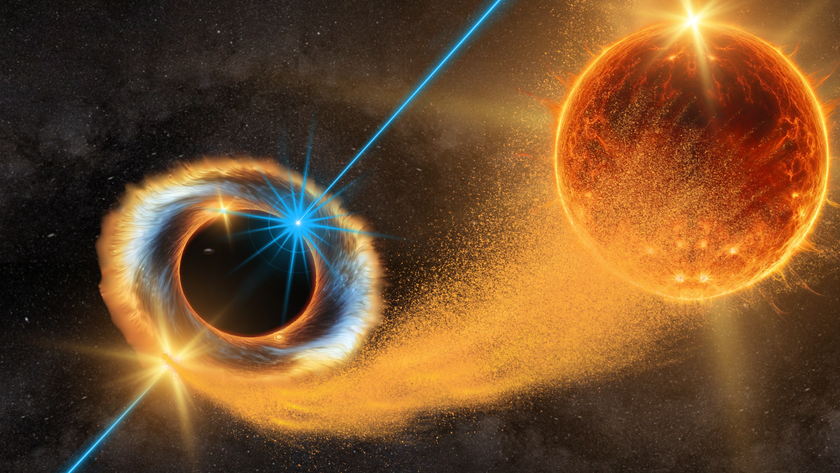U-F-NO! NASA Shoots Down Speculation Over Space Station Video

There's a rumor swirling around the internet that NASA intentionally turned off a live camera on the International Space Station (ISS) after the feed showed a small object just above Earth. The suggestion (or outright accusation, by some) is that NASA is trying to cover something up — that the bright light was an alien UFO or a large piece of space debris that the agency doesn't want people to know about.
Is there any truth to the rumors? Here's what we know: A bright object was visible in the video feed coming from the live camera on the ISS, and the camera cut out shortly after the object appeared (the camera came back on shortly after, and is now running as usual).
But those events won't surprise anyone with a little bit of knowledge about the station cameras, because both things occur commonly. And NASA representatives have now stated very directly that the agency did not turn off the camera intentionally.
It's not rare for the space station camera feeds to cut out for various reasons, including the fact that the station orbits the Earth about 16 times per day, and frequently slips out of direct contact with NASA.
"The International Space Station regularly passes out of range of the Tracking and Data Relay Satellites (TDRS) used to send and receive video, voice and telemetry from the station," representatives from NASA's Human Exploration and Operations Mission Directorate said in a statement published by the Huffington Post.
"For video, whenever we lose signal (video comes down on our higher bandwidth, called KU), the cameras will show a blue screen (indicating no signal) or a preset video slate, depending on where you are watching the feed," the statement said.
Secondly, bright objects hurtle toward Earth all the time. There are space rocks burning up in the atmosphere (meteors, also known as shooting stars). Human-made space debris can also burn up while falling through the atmosphere (space agencies monitor the larger chunks). And then there's the possibility that the bright spot as an artifact — nothing more than a reflection.
Get the Space.com Newsletter
Breaking space news, the latest updates on rocket launches, skywatching events and more!
"Reflections from station windows, the spacecraft structure itself or lights from Earth commonly appear as artifacts in photos and videos from the orbiting laboratory, just as reflections often appear in pictures taken on Earth," the statement said.
Adding some finality to the speculation, the representatives added, "No unidentifiable objects have been seen from the ISS."
While that explanation may not satisfy some people, one thing to keep in mind when considering alleged NASA conspiracies is that "NASA" refers to a very large collection of people. Dozens of individuals monitor the activities on the space station constantly (although, as mentioned above, the station drops out of direct contact with the agency on a regular basis). This brings to mind the saying, "three people can keep a secret if two of them are dead," meaning, simply, that the more people who are in on a secret, the less likely it is to stay a secret.
What's more, most of those people are scientists and engineers, professionals who dedicate their lives to the pursuit of truth. It's important to keep that information in mind when weighing the likelihood of conspiracy theories.
Follow Calla Cofield @callacofield. Follow us @Spacedotcom, Facebook and Google+. Original article on Space.com.
Join our Space Forums to keep talking space on the latest missions, night sky and more! And if you have a news tip, correction or comment, let us know at: community@space.com.

Calla Cofield joined Space.com's crew in October 2014. She enjoys writing about black holes, exploding stars, ripples in space-time, science in comic books, and all the mysteries of the cosmos. Prior to joining Space.com Calla worked as a freelance writer, with her work appearing in APS News, Symmetry magazine, Scientific American, Nature News, Physics World, and others. From 2010 to 2014 she was a producer for The Physics Central Podcast. Previously, Calla worked at the American Museum of Natural History in New York City (hands down the best office building ever) and SLAC National Accelerator Laboratory in California. Calla studied physics at the University of Massachusetts, Amherst and is originally from Sandy, Utah. In 2018, Calla left Space.com to join NASA's Jet Propulsion Laboratory media team where she oversees astronomy, physics, exoplanets and the Cold Atom Lab mission. She has been underground at three of the largest particle accelerators in the world and would really like to know what the heck dark matter is. Contact Calla via: E-Mail – Twitter
Most Popular





